Have you ever passed a private garden whose interesting street edge told you it was hiding something special? I knew about Talis Bergmanis’s garden long before I met him and was able to see it in person. The plantings along the street are so striking, almost other-worldly, with chartreuse ‘Tiger Eye’ sumac standing out against a backdrop of silvery spruce and dark pines. Rising above them are some unusual river birches, Betula nigra ‘Little king.’ He prunes them to a single trunk so the new growth is a green tassel at the top, like a Dr. Seuss tree. We can see between the thin trunks, but they still form a border, like a widely spaced picket fence.
This is where I found Bergmanis last Friday morning, wearing a faded orange t-shirt and standing on a four-foot stepstool. I’d invited myself over to see his peonies, which are especially lush and vigorous this year, but there was much more to see.
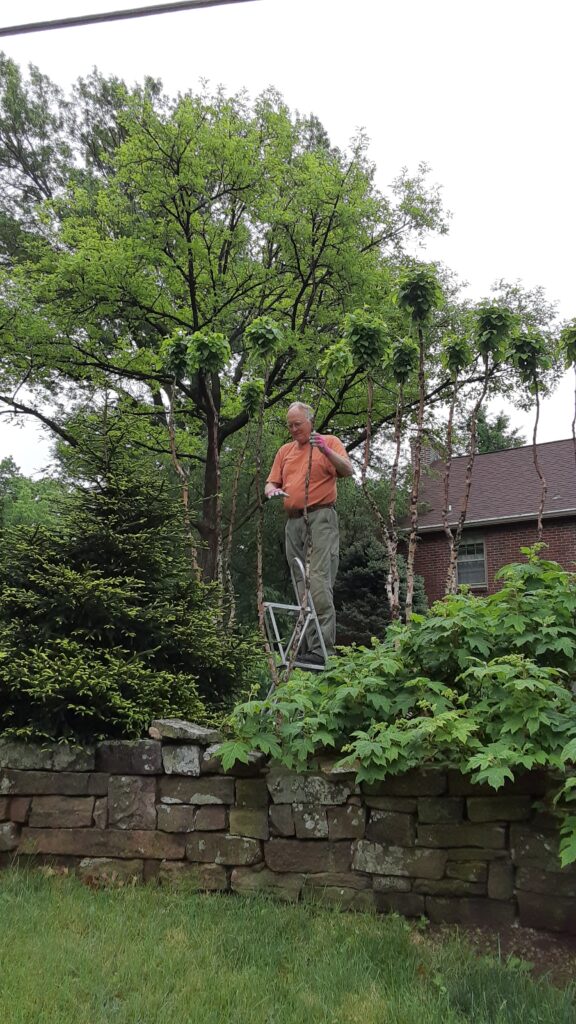
The shrubs and trees lining the street embrace a wide bed planted with sun-loving plants that like good drainage. Ice-blue amsonia and irises were blooming when I visited, with butterfly milkweed powering up for later in the season. In the front of the bed grow variegated irises, big patches of silvery Lamb’s Ears (Stachys byzantina), and bright yellow sedum. To make the bed, Bergmanis dug out two feet of clay and replaced it with a mix of topsoil, gravel, and sand. Bordering the garden in every direction are interesting small trees and shrubs, like shrub Japanese maple, blooming bottlebrush buckeye, and purple beech.
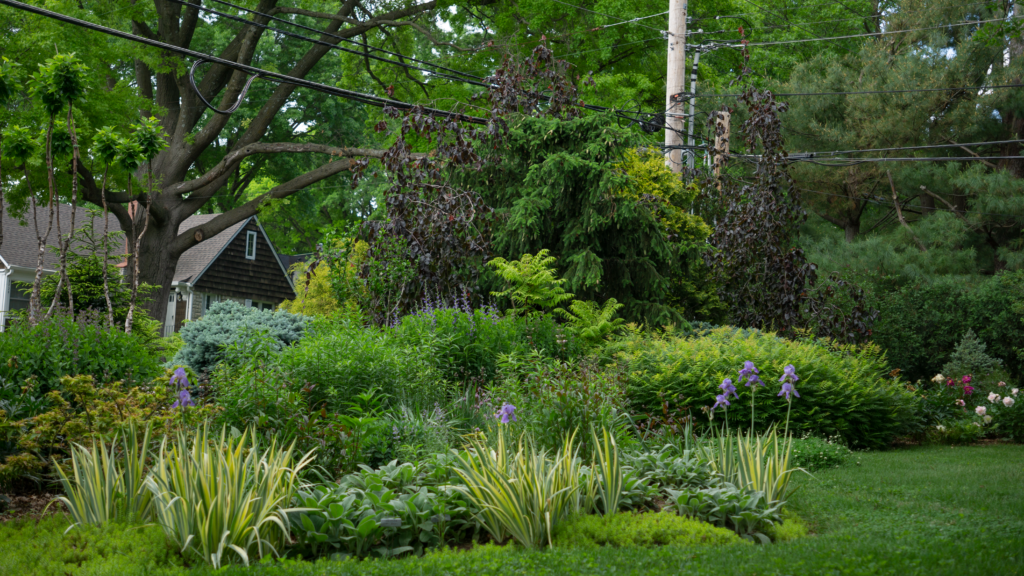
The pea-like flowers of a Kentucky Yellowwood brightened a dark corner. (I found this tree so unusual I bought one at a plant sale the next day.) A dwarf gingko, intended to be two feet high, is so happy in this spot, it tops out at almost ten feet tall.
Around the corner of the house, the backyard spreads beneath dappled shade provided by an enormous ginkgo tree. A wide bed along the western edge of the 1.3-acre property is devoted to peonies, all in bloom in different shades of pink, coral, and magenta. It’s a spectacular show if you love peonies, which I do. Bergmanis is an aficionado, a collector who grows many different varieties, often identified by metal markers.
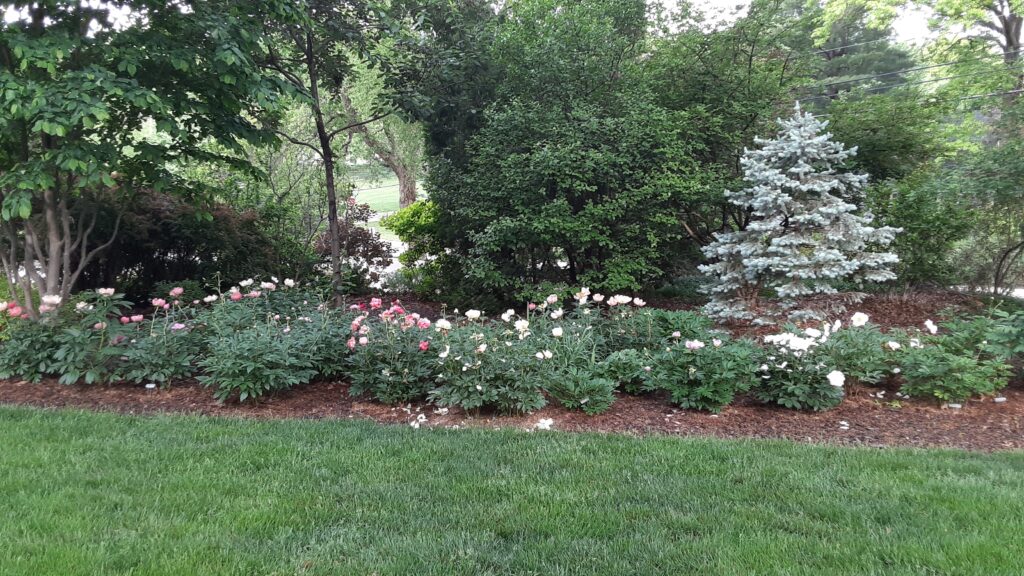
Bergmanis joined the Heartland Peony Society at a member’s suggestion, and served as its president for several years. He estimates he has over 100 peony plants, and is so knowledgeable about them, I imagine he could fill in all the details about each one’s appearance and habit and tell stories about how he acquired them.
“Peonies are not only beautiful, they’re tough,” he said. “Pass any old homesite in Kansas, and two things will mark the spot where the house once stood: a clump of orange day lilies and a blooming peony.”
Two types he recommends for our area are Peony Coral Charm and a tree peony named Hana kisoi—which means Floral Rivalry.
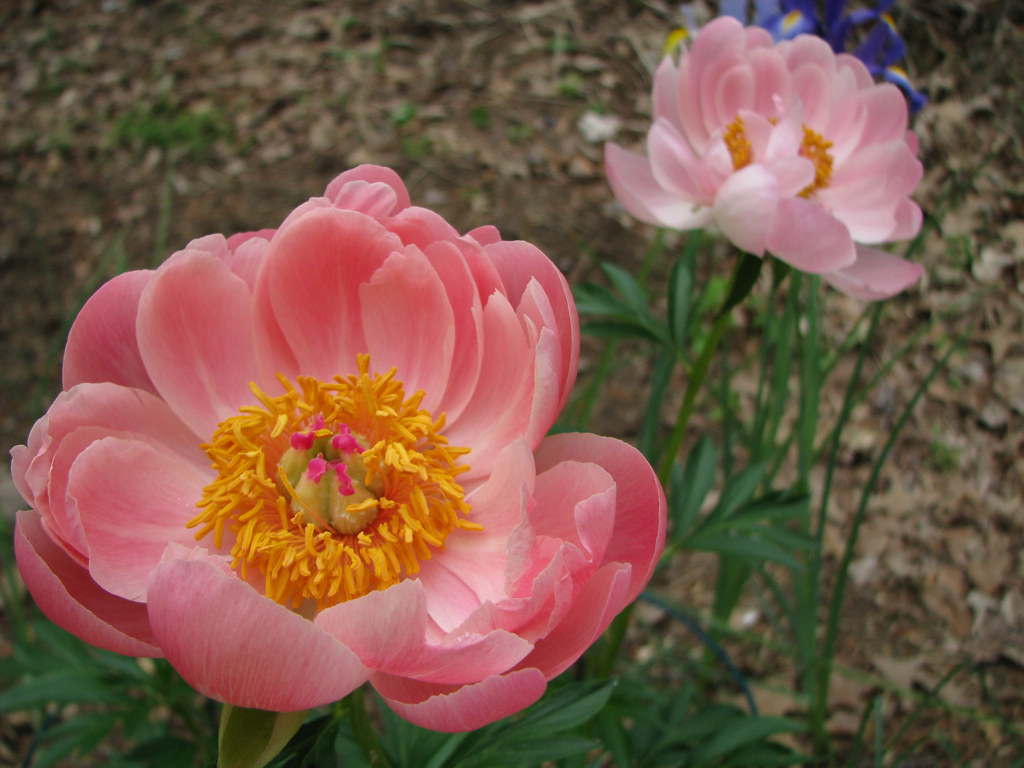
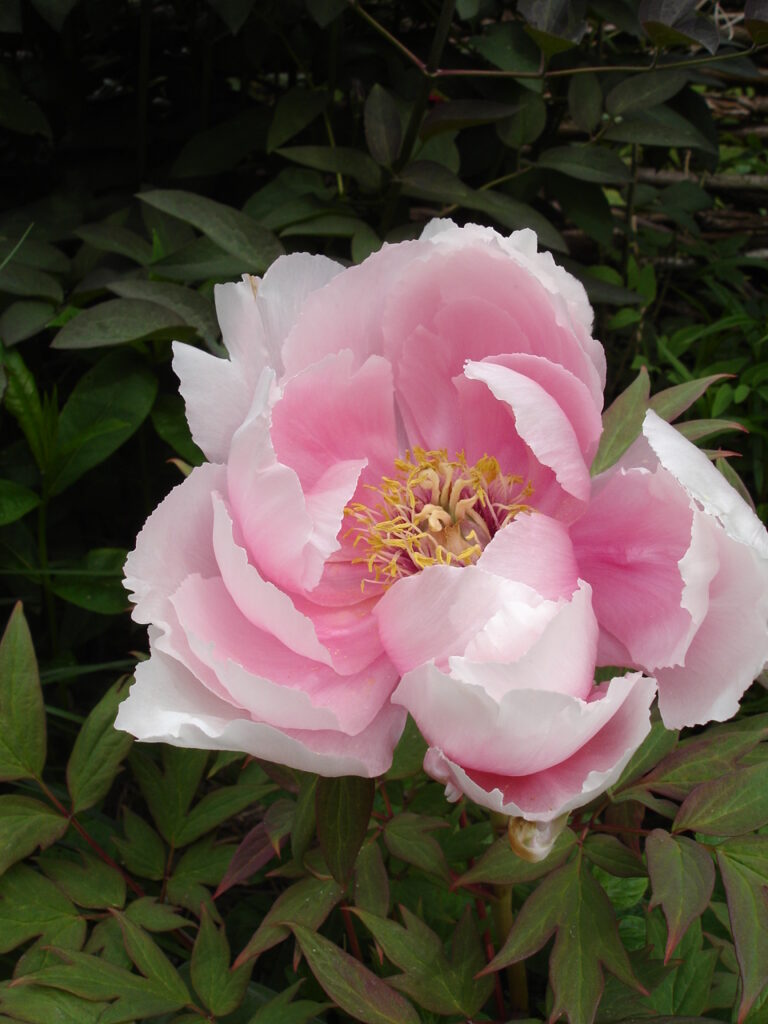
Bergmanis’ background is in photography. For many years he worked for the Star, and accompanied columnist Marty Ross for the newspaper’s weekly gardening section. “The other photographers weren’t crazy about photographing flowers,” he laughed, “But I liked it. That made everybody happy.”
The people Ross interviewed and introduced him to were all distinctive. “If she was doing a story about someone, it was because they were doing something noteworthy. They were all knowledgeable and experienced. It was a good education.”
His interest ignited, he began gardening in this location twenty-three years ago, which makes this a relatively new garden compared to, say, great gardens in England, where he loves to visit. He pointed out that some royal gardens in Japan are tended through generations, the position of head gardener passed on from father to son. But compared to most in our area, Bergmanis’s garden is mature. Conifers and evergreens give the garden structure. Every view has depth and complexity. One plant will have another rising up behind it, and another, taller one behind that. The effect is rich and layered. The sinuous curves of the beds are an argument to never again plant anything in rows.
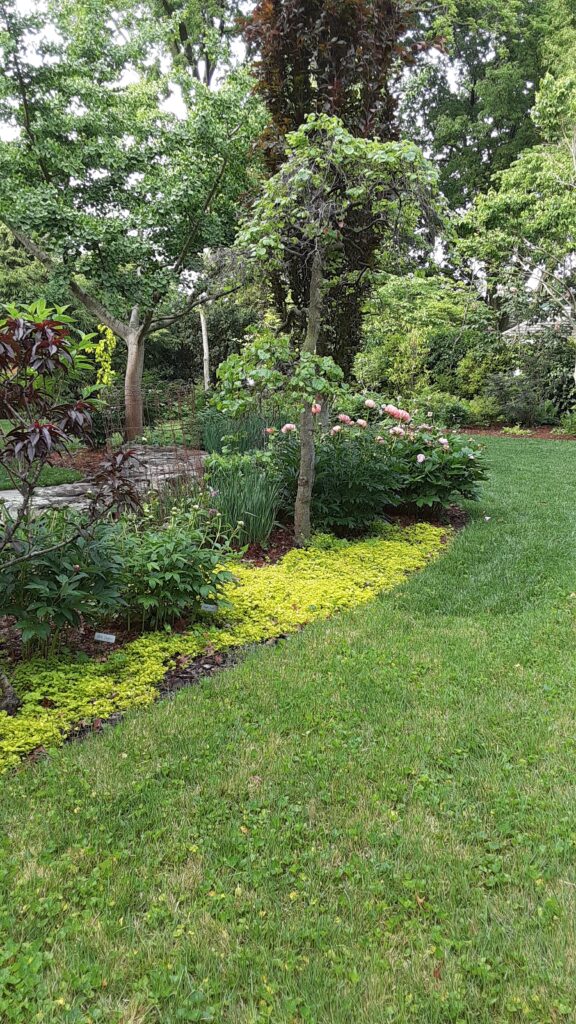
Bergmanis says the beds get larger every year, and the strips of grass between them get narrower.
When asked if he’d noticed any new trends since he began gardening, he mentioned the last six-to-eight years’ emphasis on native plants and helping pollinators. “Like Doug Tallamy says, if you want to have birds, you have to have insects. That really stood out to me.”
This marks a shift in focus for many people like him who love exotic or unusual plants that are “beautiful, but not useful,” as Bergmanis said. While he isn’t pulling anything out, most of what he’s adding now is native, drought-tolerant, and beneficial to insects. He is still on the lookout for new and unusual plants, however, like a new Haas Halo Hydrangea , developed at Mt. Cuba, “a knockout that offers the perfect combination of horticultural excellence and pollinator value.”
Bergmanis is generous with his garden, frequently opening it up for tours, like one for members of Gardeners Connect in 2022 commemorated in this Facebook slideshow, and to registered attendees of the American Conifer Society’s Central Region Conference in June.
A visit to this garden is an extraordinary opportunity not to be missed. I feel honored to have visited and to have met Talis.
Thank you for reading!
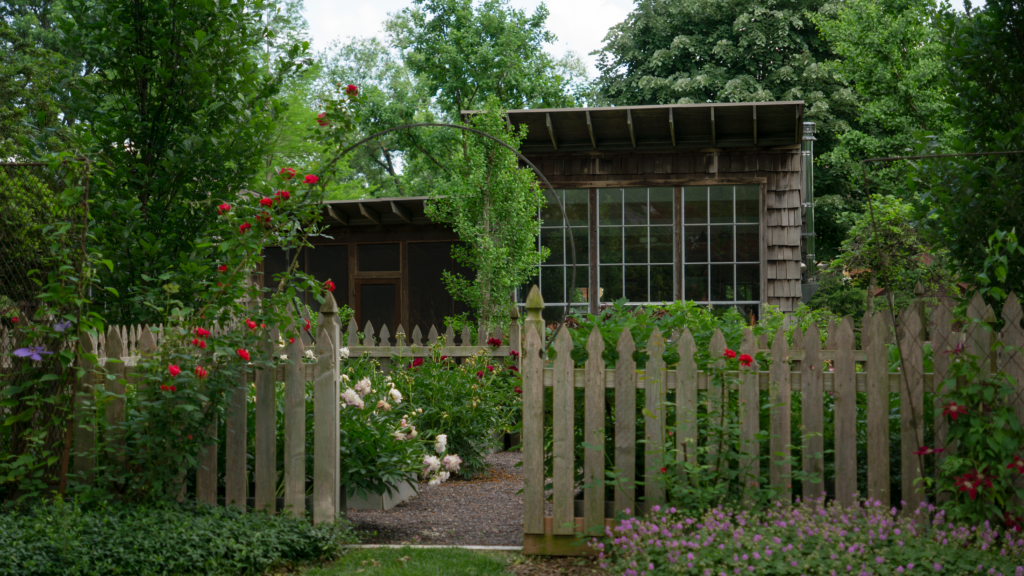
Recent posts you may have missed:
- Dreams come true: visiting the chateaux of the Loire
- A conversation withTalis Bergmanis
- Road Trips: Visiting Three Great Gardens Open to the Public
- Rewilding: turning lawns into meadows – a conversation with Mackenzie Adkins
- Flowering bulbs at Powell Gardens and why so many early spring flowers are yellow
